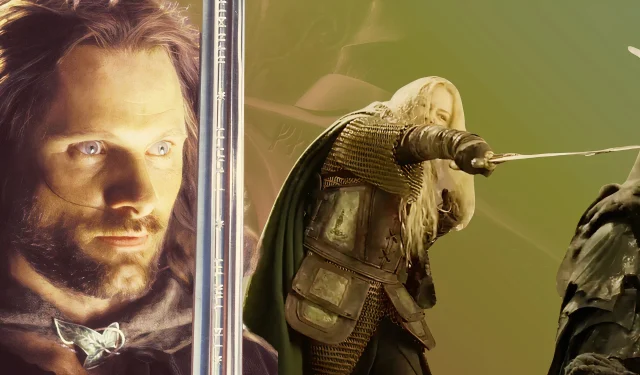
Peter Jackson’s cinematic adaptations of The Lord of the Rings and The Hobbit are celebrated masterpieces that pay homage to J. R. R. Tolkien’s monumental literary works, showcasing the extraordinary craftsmanship of the artisans at Wētā Workshop. Although these films sometimes diverge from their source material, they encapsulate a creative spirit that demonstrates profound respect for Tolkien’s expansive mythology. Viewers are immersed in a vivid Middle-Earth where potent magical artifacts are wielded by valiant heroes and humble hobbits alike.
At its core, The Lord of the Rings narrates a timeless saga about the triumph of the most innocuous hero against overwhelming evil. The annals of Middle-Earth are replete with tales of unassuming champions overcoming dark forces like Morgoth and participating in monumental battles that mirror internal struggles. As a fitting tribute to this epic narrative tradition, the heroes of Middle-Earth wield swords boasting histories as rich as the conflicts portrayed in the films.
10. The Barrow-Blades
Forged by the Dúnedain, Wielded by Meriadoc Brandybuck, Peregrin Took, and Samwise Gamgee
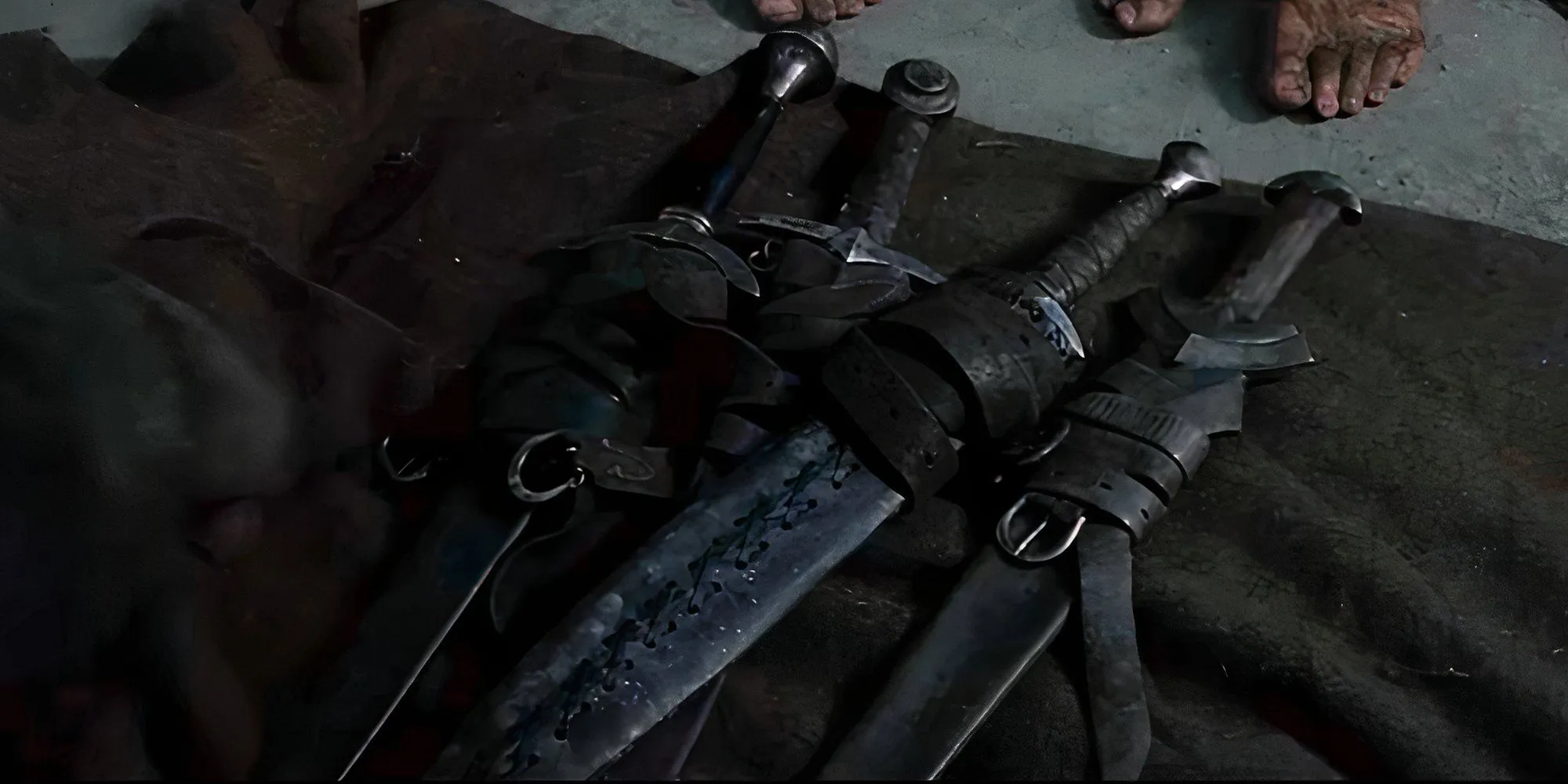
In The Fellowship of the Ring, Aragorn bestows these daggers upon the hobbits at Weathertop just before the Nazgûl launch their attack. Although Frodo loses his blade during the ensuing chaos, he later acquires Sting, his uncle’s weapon. Samwise misplaces his blade while rescuing Frodo from Cirith Ungol, while Peregrin effectively uses his at the Black Gate.
However, the most celebrated of these blades belongs to Meriadoc, who confronts the Witch-King of Angmar during the Battle of the Pelennor Fields. In Tolkien’s works, these Barrow-blades are gifted to the hobbits by Tom Bombadil after he liberates them from the Barrow-wights. During the climactic battle, as Éowyn faces the formidable Witch-King, Meriadoc stabs him in the leg with his Barrow-blade—forged specifically to combat Angmar’s forces, allowing Éowyn to fulfill the prophecy and strike the fatal blow.
9. Herugrim
Forged by the Men of Rohan, Wielded by Théoden King

Herugrim, the regal sword of Théoden, King of Rohan, symbolizes his reclaiming of power after breaking free from Saruman’s malevolent influence. Upon receiving his sword from Gandalf, Théoden is visibly reassured by its familiar weight. Herugrim played a pivotal role in battles at the Hornburg and the Pelennor Fields, taking down numerous foes, although it ultimately falters against the dreaded Witch-King.
The name “Herugrim,”derived from Old English, translates to “very fierce”or “cruel,”reflecting a linguistic inspiration drawn from Anglo-Saxon studies. This is especially notable since Tolkien meticulously crafted a language for Rohan mirroring the historical Anglo-Saxon tongue.
8. The Sword of Éowyn
Forged by the Men of Rohan, Wielded by Éowyn
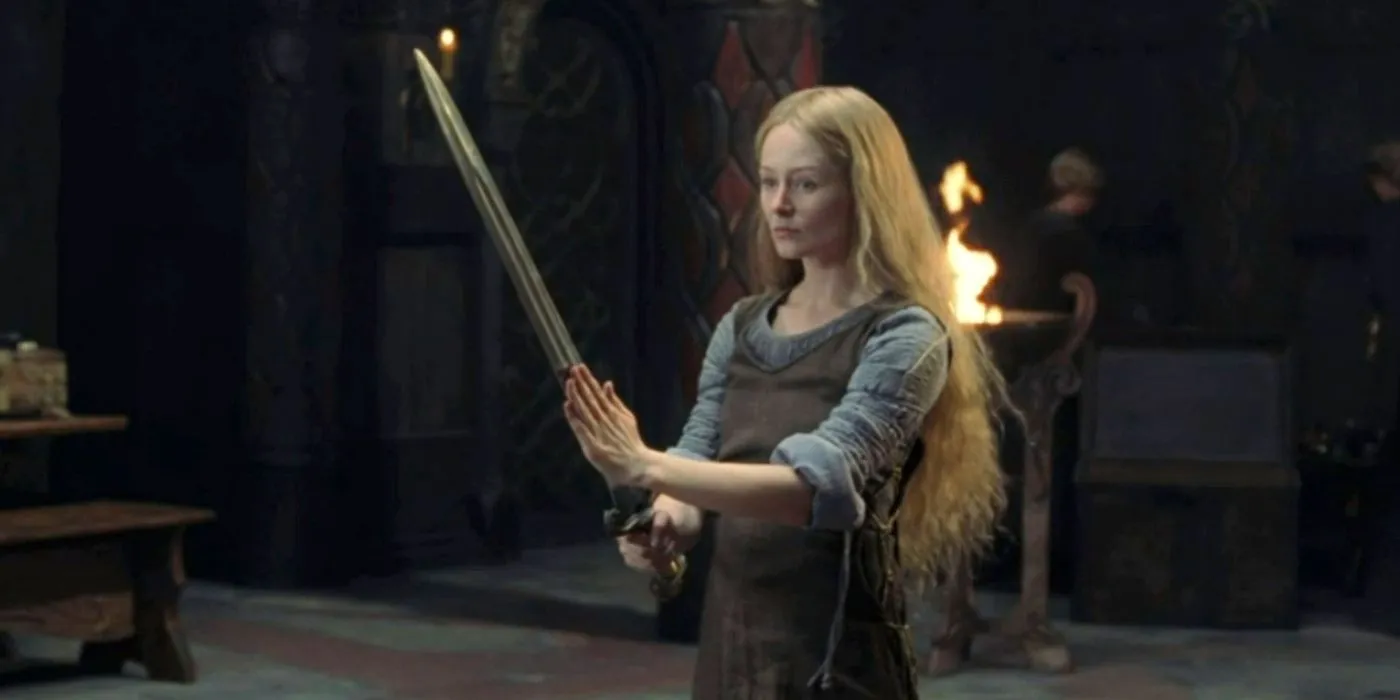
Éowyn’s blade may appear ordinary; however, it possesses extraordinary significance. This straight-edged sword embodies a prophecy set to unfold years before it materializes. In the context of the narrative, the Witch-King, a centuries-old adversary of the Rohirrim, is destined to fall not by the hands of mortals.
In a dramatic twist during the Battle of the Pelennor Fields, as the Witch-King seeks to claim Théoden’s life, Éowyn rides against the odds to protect her uncle. With a single strike, she vanquishes the Witch-King—her weapon shattering upon making contact with his undead body, signifying both her courage and the fulfillment of age-old prophetic words.
7. Hadhafang
Forged by the Elves of the First Age, Wielded by Elrond and Arwen
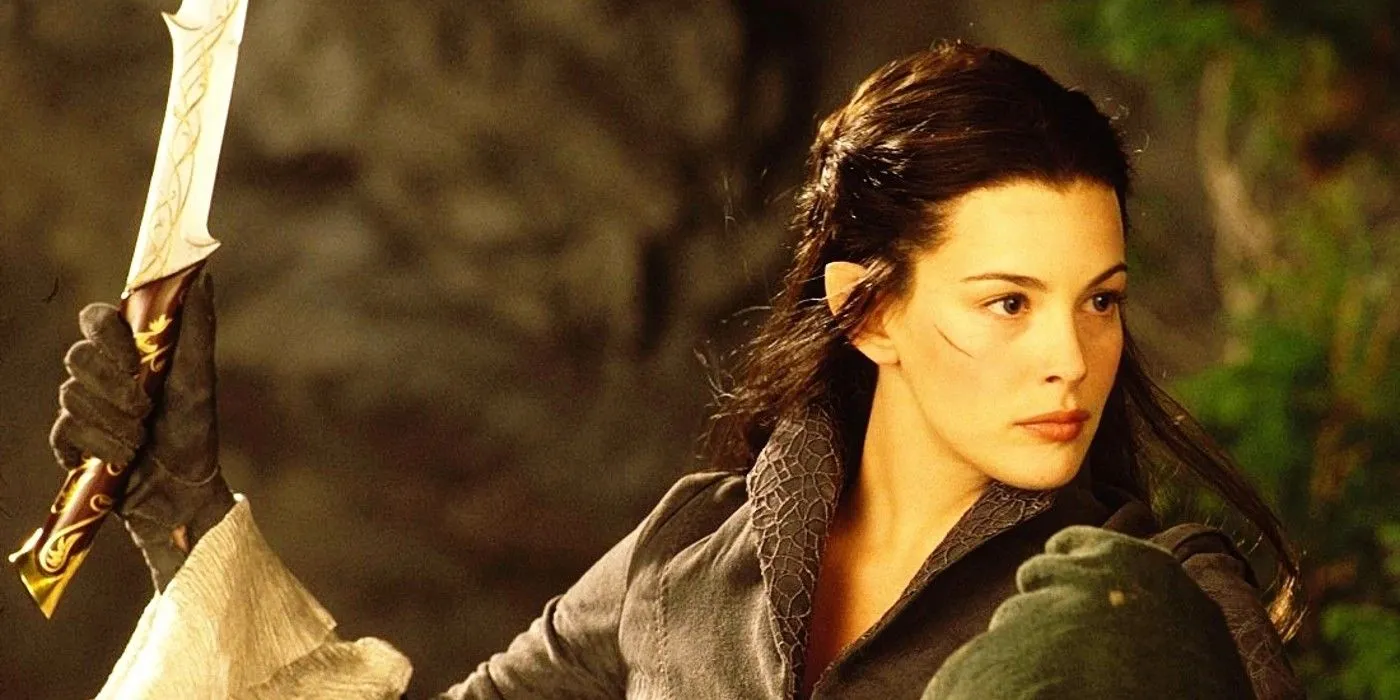
Distinctive to Peter Jackson’s adaptations, Hadhafang (translated as “throng-cleaver”) is depicted as wielded by both Elrond and Arwen. In pivotal scenes, Arwen brandishes this sword to fend off the Nazgûl while rescuing Frodo. It is revealed that Hadhafang is steeped in history, having originated during the Fall of Gondolin, held by Idril Celebrindal, Elrond’s grandmother.
6. Guthwinë
Forged by the Men of Rohan, Wielded by Éomer
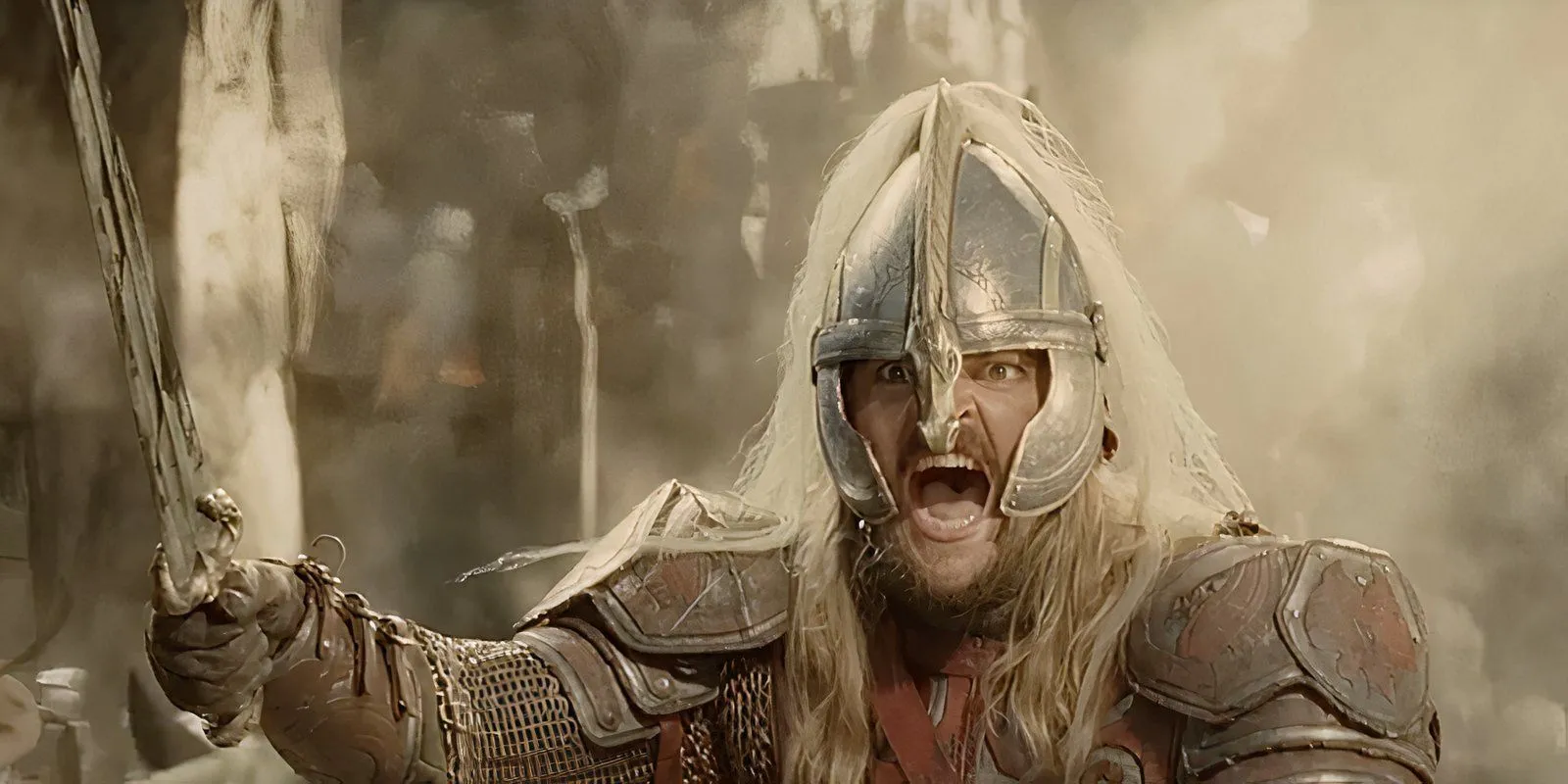
Éomer’s blade, Gúthwinë, signifies loyalty and valor as he commandeers it to break the siege at Helm’s Deep and charge valiantly during the Battle of the Pelennor Fields. Although this sword remains unnamed in the films, Éomer’s battle cry in The Two Towers acknowledges it, marking a significant moment in Rohan’s history. The term “Gúthwinë”can be interpreted as “battle-friend,”denoting camaraderie among warriors.
5. Glamdring
Forged by the Elves of Gondolin, Wielded by Gandalf
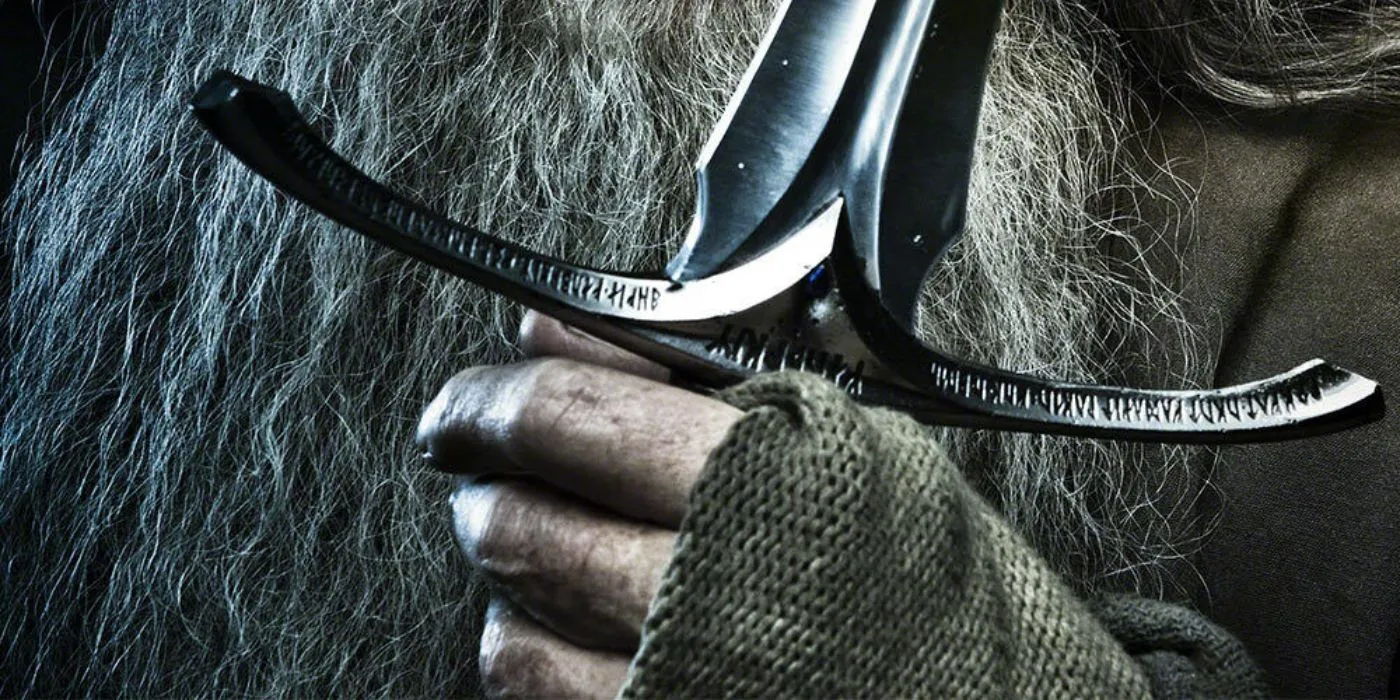
Glamdring, a sword of ancient origin, was once wielded by Turgon, Elven-king of Gondolin. The blade, known as “foe-hammer,”was integral during battles against Morgoth’s forces, its legacy enduring through time. The sword was rediscovered by the Company of Thorin Oakenshield when they encountered trolls, ultimately becoming Gandalf’s weapon of choice against darkness, notably during his clash with the balrog, Durin’s Bane.
4. Orcrist
Forged by the Elves of Gondolin, Wielded by Thorin Oakenshield
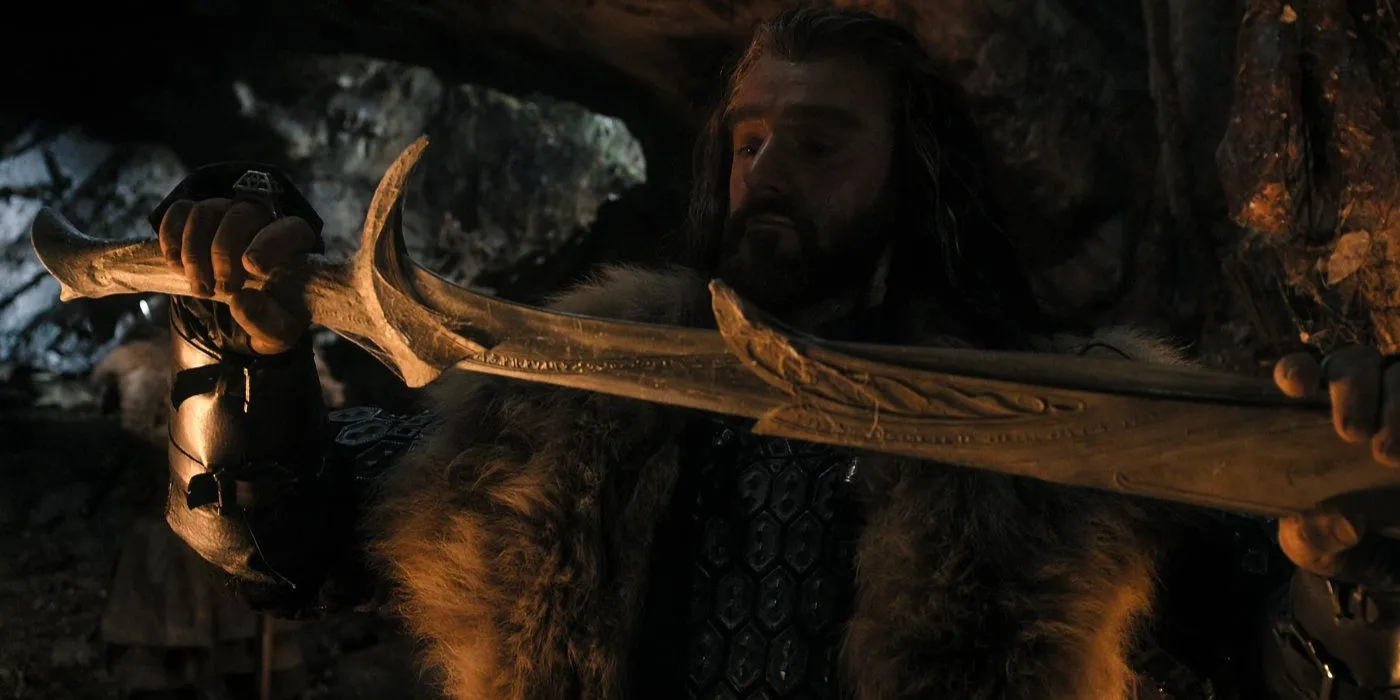
Accompanying Glamdring, Orcrist—or the “goblin-cleaver”—was another legendary blade from Gondolin. Initially belonging to a noble elven prince, it became Thorin Oakenshield’s weapon through fate and fortune, assisting him in numerous battles against goblins. Although Orcrist was later confiscated while Thorin and his allies were imprisoned, it would eventually return to Thorin during the Battle of the Five Armies, symbolizing his leadership and courage against overwhelming odds.
3. Sting
Forged by the Elves of the First Age, Wielded by Bilbo Baggins, Frodo Baggins, and Samwise Gamgee
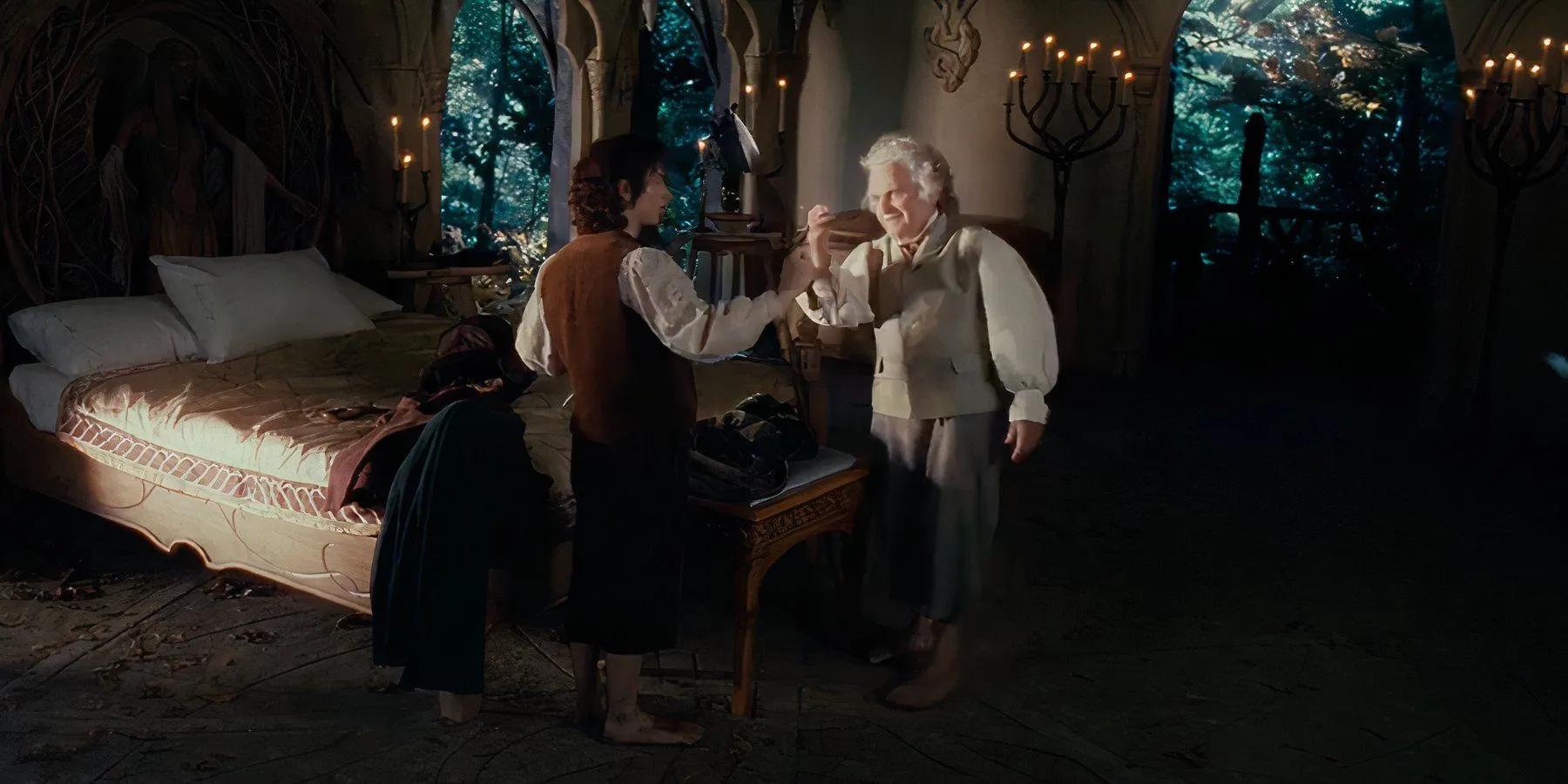
Though seemingly unremarkable, Sting is rich in history and symbolism. Forged by the elves, it came into Bilbo Baggins’ possession during the troll-horde raid and became his trusty weapon against spiders in Mirkwood. After proving instrumental in his adventures, Bilbo presented Sting to Frodo, who bore the sword across perilous journeys towards Mordor, embodying bravery in the face of darkness.
2. Narsil
Forged by the Dwarf Telchar of Nogrod, Wielded by Elendil and Isildur
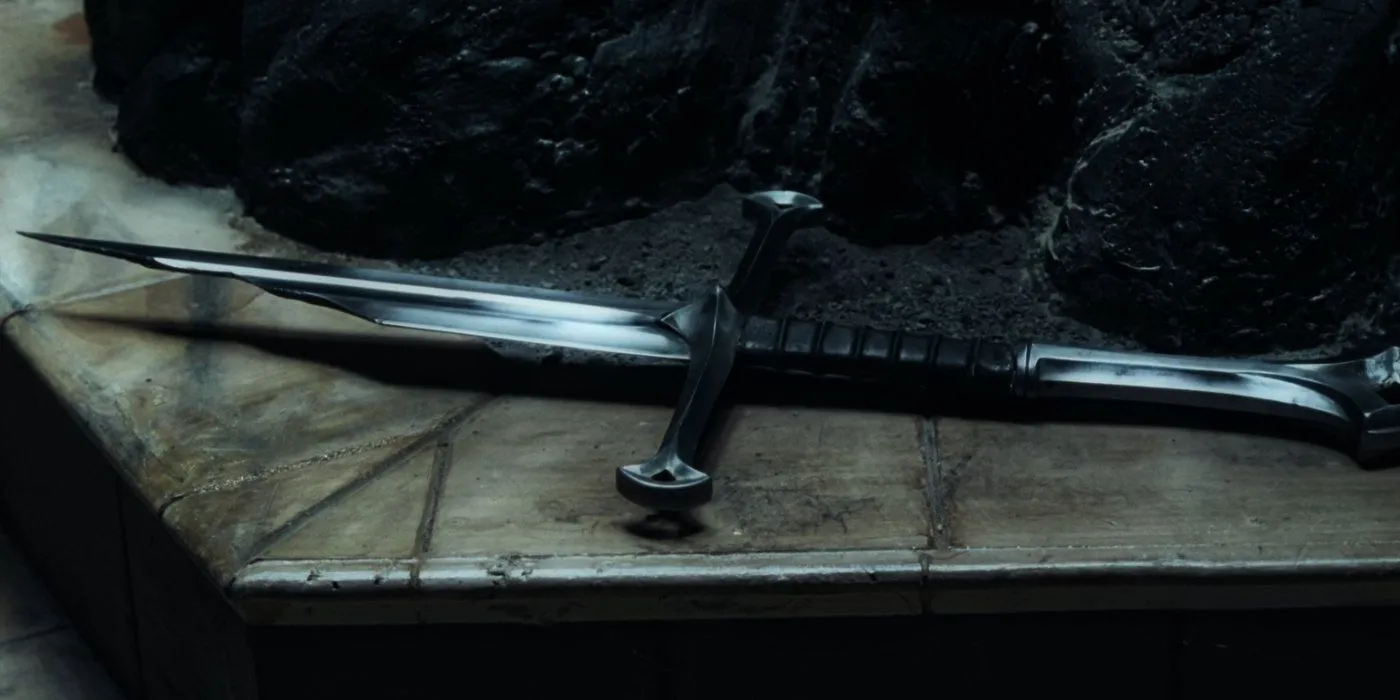
Narsil embodies a legacy intertwined with Middle-Earth’s tumultuous history. Bestowed upon Elendil, High King of Gondor and Arnor, the sword became a vital weapon in the Last Alliance’s struggle against Sauron. During the Battle of Dagorlad, it glowed with an otherworldly light, earning its name which translates to “red and white flame.”Although it shattered upon Elendil’s fall, its remnants would be crucial in defeating Sauron when Isildur wielded the hilt to sever the Dark Lord’s finger, marking a turning point in history.
1. Unnatural
Reforged by the Elves of Imladris, Wielded by Aragorn
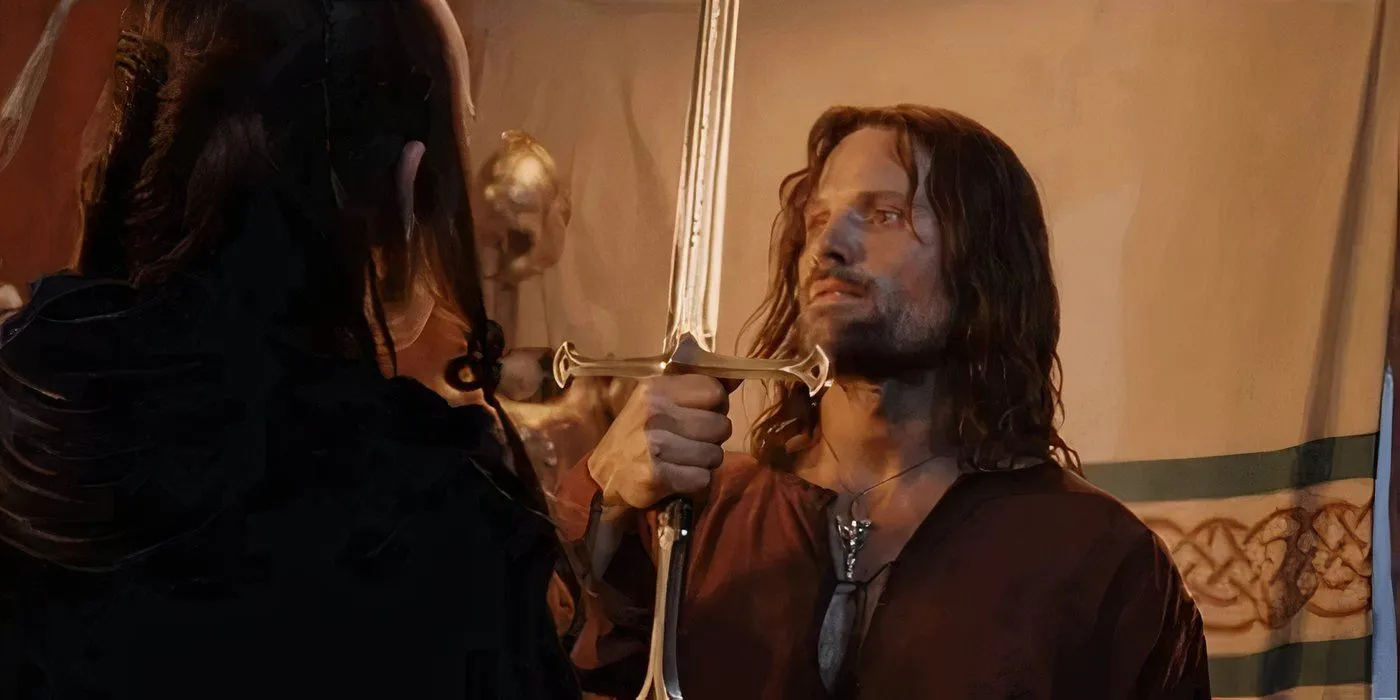
Andúril, the reforged Narsil, represents hope and renewal as it reinvigorates Aragorn’s claim to his heritage as Isildur’s heir. After much hesitation, Elrond reforges the broken sword—a decision catalyzed by Aragorn’s impending battle against Sauron. With Andúril, nicknamed “the flame of the West,”Aragorn embraces his destiny, leading the charge through the challenges of the War of the Ring, proving that true lineage can guide the realms of Men against darkness once more.
(Sources: Bosworth-Toller Old English Dictionary)




Leave a Reply